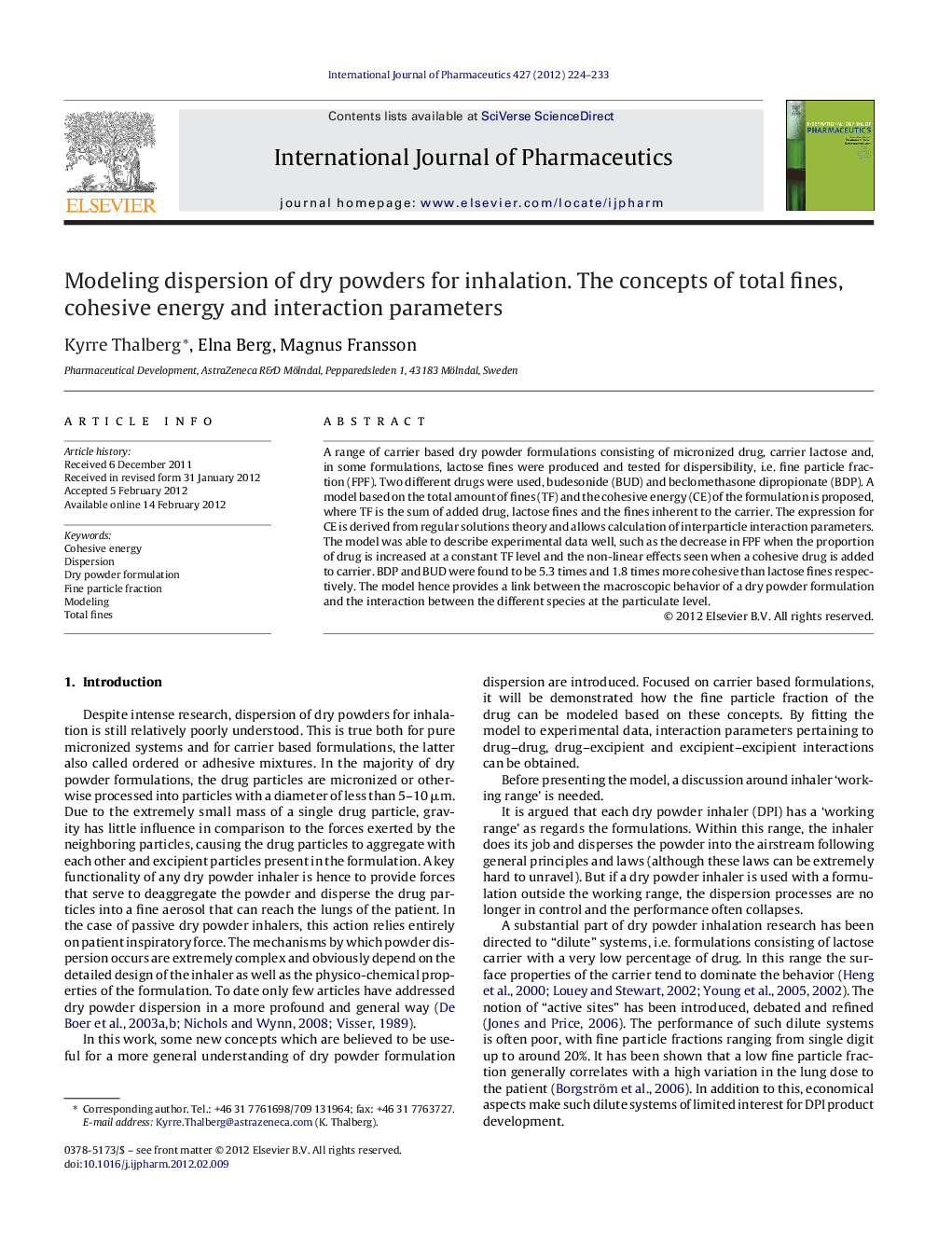| Article ID | Journal | Published Year | Pages | File Type |
|---|---|---|---|---|
| 5820996 | International Journal of Pharmaceutics | 2012 | 10 Pages |
Abstract
A range of carrier based dry powder formulations consisting of micronized drug, carrier lactose and, in some formulations, lactose fines were produced and tested for dispersibility, i.e. fine particle fraction (FPF). Two different drugs were used, budesonide (BUD) and beclomethasone dipropionate (BDP). A model based on the total amount of fines (TF) and the cohesive energy (CE) of the formulation is proposed, where TF is the sum of added drug, lactose fines and the fines inherent to the carrier. The expression for CE is derived from regular solutions theory and allows calculation of interparticle interaction parameters. The model was able to describe experimental data well, such as the decrease in FPF when the proportion of drug is increased at a constant TF level and the non-linear effects seen when a cohesive drug is added to carrier. BDP and BUD were found to be 5.3 times and 1.8 times more cohesive than lactose fines respectively. The model hence provides a link between the macroscopic behavior of a dry powder formulation and the interaction between the different species at the particulate level.
Related Topics
Health Sciences
Pharmacology, Toxicology and Pharmaceutical Science
Pharmaceutical Science
Authors
Kyrre Thalberg, Elna Berg, Magnus Fransson,
